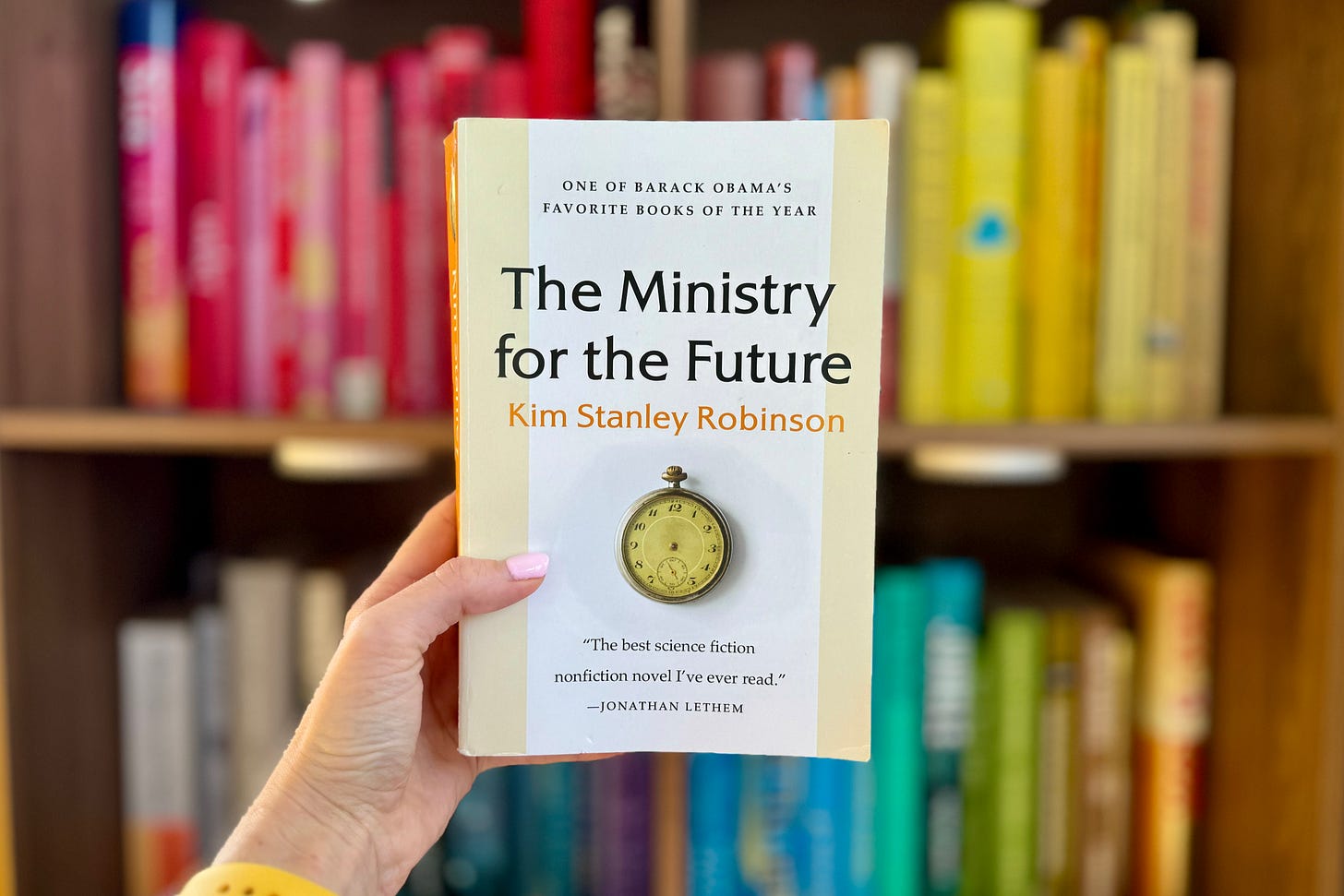Is this what the future looks like under climate change?
In The Ministry for the Future, Kim Stanley Robinson paints a gripping and tirelessly researched portrait of a world reshaped by climate change.
Note: Although I typically review nonfiction, this book is a work of fiction. However, its historical details are accurate, and its future predictions are — while speculative — valuable thought experiments.20 million people killed in a heatwave in India. Passenger planes blown out of the sky. Fossil fuel executives assassinated walking into meetings.
Nothing out of the realm of possibility in a future rewritten by climate change.
Violence is a central theme in The Ministry for the Future, Kim Stanley Robinson’s speculative fiction set in (approximately) the second half of the 21st century. While I was terrified by some of the bigger picture events that take place, I was hooked by the individual stories of two of the book’s main characters — one mentally destroyed by climate change, the other on a frustrating bureaucratic quest to solve it. And as the book found its rhythm, I was also inspired by the realistic but often hopeful vignettes of viable climate solutions. For a climate tech writer like myself, these were the fun parts.
While some narrative threads are a little underdone and much of the scene-writing is basic, what Robinson has pulled together — the absolute breadth of his research around climate change’s problems and solutions — not to mention the truly global span of the book — is ambitious and impressive.
Whether events like these come to pass or not, the vivid images from this book will certainly stick with you.
Author: Kim Stanley Robinson
Rating: 4.5/5
Main idea: Decades into the future, the effects of climate change will be felt by every living being. Climate change will affect politics, wildlife, communities, relationships, mental health — the world order itself. And the people who live through it will be people just like us.
Favourite quote: “Globalization was many things—including a reality, in that they all lived on one shared planet in which borders were historical fantasies—but it was also a form of Americanization, of soft power imperialism combined with economic dominance, in that the US still had seventy percent of the capital assets of the world secured in its banks and companies, even though it had only five percent of the world’s population.”
Did you read The Ministry for the Future? Let me know what you thought.
Relevant reads:
The Social Conquest of Earth (Edward O. Wilson, 2012)
Termination Shock: A Novel (Neal Stephenson, 2021)



